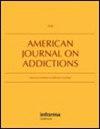Prenatal cannabis use prevalence in the United States has increased. Relaxation of state-level cannabis policy may be contributing to the diminished risk perception of using cannabis. The main psychoactive constituent of cannabis, delta-9-tetrahydrocannabinol, crosses the placenta, interacting with functional cannabinoid receptors in the fetus. Here, we assess the association between prenatal cannabis exposure (PCE) and a set of birth outcomes.
Using the Michigan Archive for Research on Child Health, a prospective pregnancy cohort, we linked prenatal survey data with neonatal data from state-archived birth records. Recruitment occurred in 23 clinics across Michigan. Pregnant participants with live birth records between October 2017 and January 2022, after exclusion for missing data on cannabis use, birth outcomes, and covariates, were included in the final analytic sample (n = 584). Analyses involved generalized linear models.
An estimated 15% (95% confidence interval [CI]: 12%, 18%) of participants reported using cannabis during pregnancy. Covariate-adjusted models revealed an association between PCE and birth size (ß = −0.3; 95% CI: −0.5, −0.003).
Findings suggest a relationship between PCE and smaller birth size. Clinicians should follow guidelines outlined by the American College of Obstetricians and Gynecologists when counseling pregnant patients on cannabis use.
We detected a significant association between PCE and birth size. Most studies focus only on the extremes of birth size, however, use of z-scores allow for assessment of the sex-specific birth weight-for-gestational age distribution, increasing the accuracy of detecting an effect of cannabis exposure on birth size.


